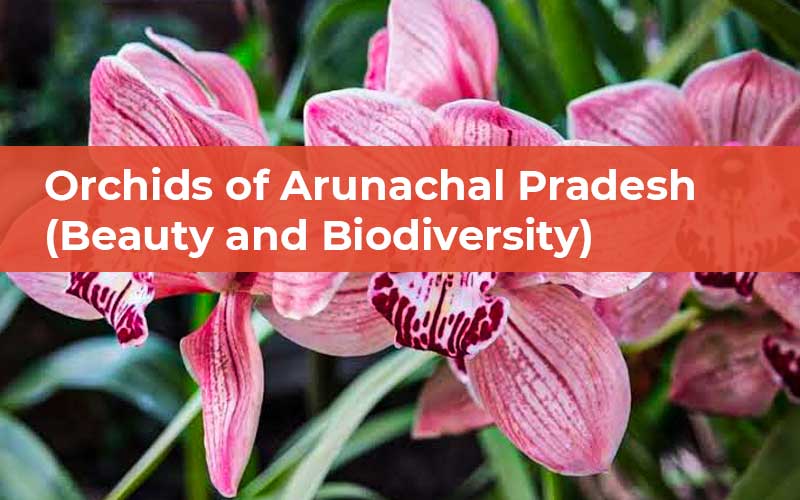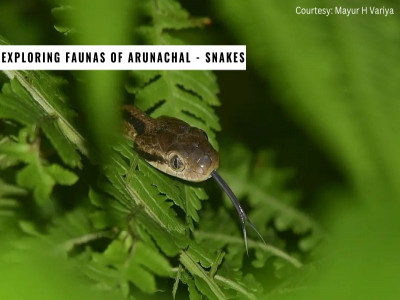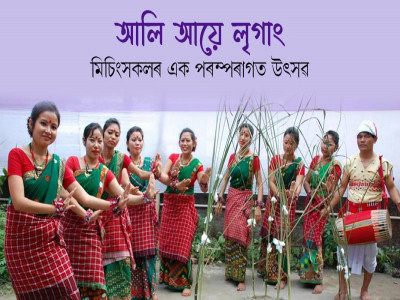
Orchids of Arunachal Pradesh (Beauty and Biodiversity)
India is not only culturally diverse but also rich in biodiversity. An exquisite assortment of plant species can be found in India, and one of the most fascinating of these is the orchid. Despite not being indigenous to India, orchids have grown to be cherished species of vegetation as well as wildlife here. Arunachal Pradesh, located in northeastern India and bordered by China, Bhutan, and Myanmar, is known for hosting an incredible variety of orchids. It has a special climate, with steep terrain and lots of rain creating the perfect environment for orchid prosperity.
In this article, we shall examine some of the most recognised orchids found in Arunachal Pradesh with an emphasis on their classification, habitat, flowering season, and morphology.
Acanthephippium
sylhetense
The Acanthephippium sylhetense, commonly known as the Sylhet Acanthephippium, is a fascinating orchid that can be found in Arunachal Pradesh. It belongs to the orchid family (Orchidaceae) and the sub-family Epidendroideae. This plant is characterized by its sympodial growth habit, which means that it produces new shoots from the base of the previous year's growth. It is also a terrestrial orchid, which means it grows on the ground rather than in trees.
The Sylhet Acanthephippium grows at altitudes between 1000 and 1500 metres and flowers between April and June. Its fleshy stem and sheathed rhizome give it a unique appearance, and it produces raceme-shaped inflorescences. The flowers themselves are dull white and blotched with yellow, making for a striking contrast. The Sylhet Acanthephippium is found in the tropical forest areas of the Central Siang, Upper Siang, and West Siang districts of Arunachal Pradesh. It is also available in the wild and in two renowned orchidariums in the state, namely the Dirang Orchid Centre and the Tippi Orchid Centre.
Biermannia bimaculata
The Biermannia bimaculata, also known as the Two-spotted Biermannia, is a visually stunning orchid. This orchid has a monopodial growth habit, which means that it produces new growth from the same point year after year. It is also an epiphytic orchid, meaning it grows on trees rather than on the ground.
The Two-spotted Biermannia grows at altitudes between 500 and 1000 metres and flowers between April and September. It is found in tropical forests and is available in the wild in Arunachal Pradesh's East Kameng, Lower Subansiri, Upper Subansiri, and West Kameng districts. This orchid produces raceme-shaped inflorescences, and its flowers are golden-yellow in colour. They are small, measuring about 1-1.2 centimetres across, and the plant is distinctive in its crowding of multiple flowers onto a single spike.
Calanthe densiflora
The Calanthe densiflora, referred to as the Densely Flowered Calanthe, is another stunning orchid found in Arunachal Pradesh. It belongs to the sub-family Epidendroideae and has a sympodial growth habit, grows terrestrially, and produces raceme-shaped inflorescences. It thrives in sub-tropical forests and is distinctive for its sheathed rhizome.
The Densely Flowered Calanthe grows at altitudes between 1200 and 1800 metres. It flowers between September and October and is found in Selari. Its flowers are yellow and approximately 2 centimetres across. The plant is available in the wild and in Arunachal Pradesh's various districts as well.
Dendrobium cumulatum
The Dendrobium cumulatum, also known as the Crowded-Inflorescence Dendrobium, is one of the most visually striking orchids found in Arunachal Pradesh. This orchid also belongs to the subfamily Epidendroideae.
It is characterized by its sympodial growth habit and an epiphytic orchid, meaning it grows on trees. The Crowded-Inflorescence Dendrobium grows at altitudes between 100 and 1000 metres and flowers between May and August. It is found in tropical forests.
This orchid produces raceme-shaped inflorescences, and its flowers are a deep purplish colour. They measure approximately 3.5 centimetres across. The plant is available in the wild in Arunachal Pradesh's East Kameng and West Kameng districts and in the Tippi Orchid Centre.
Epipactis helleborine
The Epipactis helleborine, or Broad Leafed Helleborine, is a stunning orchid found in Arunachal Pradesh. It flowers between July and September and is found in sub-tropical, temperate, and tropical forests. However, it is not available in the wild within India.
This orchid has a monopodial growth habit and grows on the ground. It grows at altitudes between 900 and 3600 metres. While its rhizome has no known data, it produces spike-shaped inflorescences. The flowers are small, approximately 0.7-1.5 centimetres across, and are greenish with red or violet tinges.
Germplasm Availability
Arunachal Pradesh is one of the few states in India that has germplasm availability for orchids. The state is home to both wild and cultivated orchids, with Dirang Orchid Centre and Tippi Orchid Centre being two renowned orchidariums housing many of these orchids.
All in all, Orchids are fascinating plants, and Arunachal Pradesh is one of the best places in India to witness the beauty of these plants. The diverse climate, terrain, and forest types of the state provide ideal conditions for orchids, leading to an incredible diversity of species. The five orchids described above are just a few of the many that can be found in Arunachal Pradesh. Together, they showcase the beauty and biodiversity of this incredible Northeast Indian state.
Reference(s): Orchids of Arunachal Pradesh S. N. Hegde 1984; IOSPE (Internet Orchid Species Photo Encyclopedia); An Illustrated Guide to the Orchids of Bhutan Dhan Bahadur Gurung.
Reference(s): Orchid Flora of Arunachal Pradesh H. J. Chowdhery 1998; www.tropicos.org; Flora of China.
Disclaimer: The opinions expressed in this article are those of the author's. They do not purport to reflect the opinions or views of The Critical Script or its editor.

Newsletter!!!
Subscribe to our weekly Newsletter and stay tuned.

















Related Comments